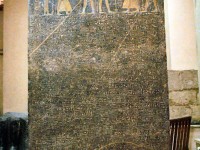These chapters (beginning in 39) are all focused on Corianton, who gets quite the paternal talk. Assuming that these chapters aren’t using Corianton merely as a framework to talk doctrine (i.e. why would this all be recorded, or is Mormon expanding it?), we can guess that Corianton hadn’t understood some things, such as the resurrection, justice, mercy, atonement. And granted, it’s not as if these are basic arithmetic, easily graspable.
What do we know about Corianton? Continue reading







 These chapters are the violent dénoument of the Ammonihah story. Grant Hardy cogently points out how this story with Alma/Amulek parallels an earlier story with Abinadi.
These chapters are the violent dénoument of the Ammonihah story. Grant Hardy cogently points out how this story with Alma/Amulek parallels an earlier story with Abinadi. 


Recent Comments